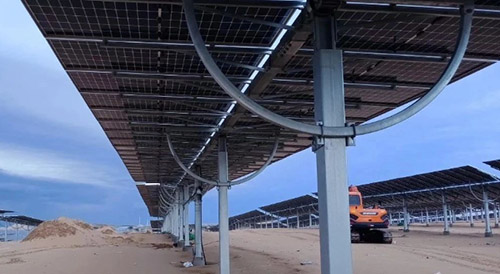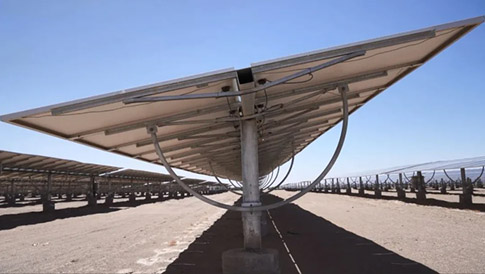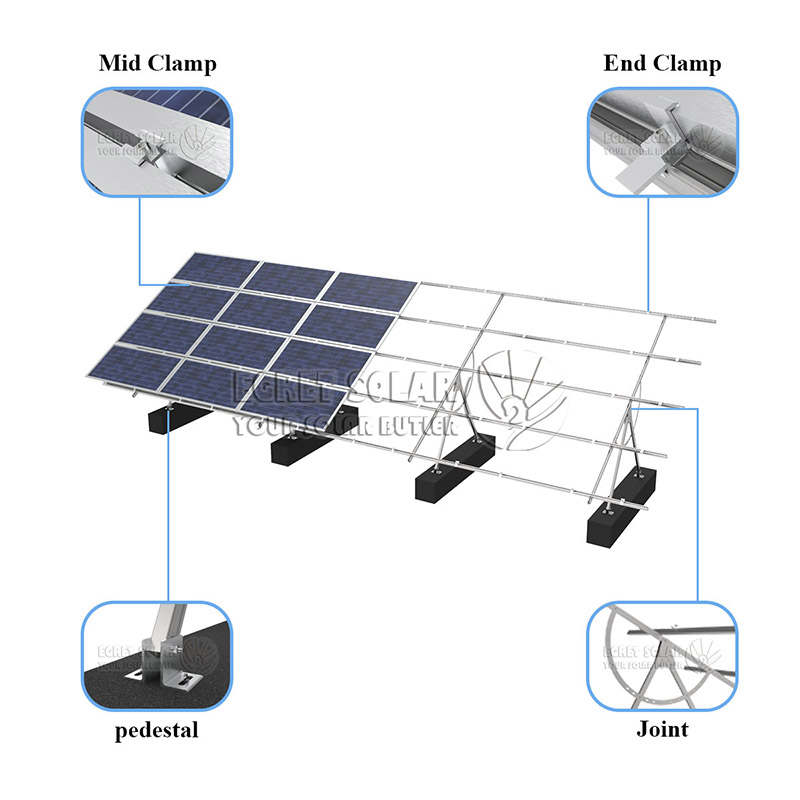- English
- Español
- Português
- русский
- Français
- 日本語
- Deutsch
- tiếng Việt
- Italiano
- Nederlands
- ภาษาไทย
- Polski
- 한국어
- Svenska
- magyar
- Malay
- বাংলা ভাষার
- Dansk
- Suomi
- हिन्दी
- Pilipino
- Türkçe
- Gaeilge
- العربية
- Indonesia
- Norsk
- تمل
- český
- ελληνικά
- український
- Javanese
- فارسی
- தமிழ்
- తెలుగు
- नेपाली
- Burmese
- български
- ລາວ
- Latine
- Қазақша
- Euskal
- Azərbaycan
- Slovenský jazyk
- Македонски
- Lietuvos
- Eesti Keel
- Română
- Slovenski
- मराठी
- Srpski језик
Manual adjustment solar mounting system
In the context of today's energy shortage, most European countries have elevated the new energy industry to a national strategic sector. As the scale of the photovoltaic (PV) industry in Europe gradually expands, land for building PV power stations is becoming increasingly scarce. How to increase the electricity generation of PV power stations per unit of land area and improve the generation efficiency has been a key topic of research in the entire PV industry. Photovoltaic panels generate electricity by absorbing sunlight, and the intensity of sunlight directly affects the amount of electricity generated. The angle of sunlight changes throughout the year due to the different seasons. Currently, fixed-tilt PV mounting structures are commonly used, which are inexpensive but maintain a constant tilt angle throughout their lifetime. These structures cannot be adjusted according to specific conditions or needs, thus failing to fully optimize the electricity generation efficiency of PV power stations. This leads to significant waste, especially in large-scale PV projects in Europe.
In order to increase the power generation and returns of PV power stations, various solutions have been proposed, with tracking and adjustment being the most commonly chosen methods. The annual electricity generation gain for tracking PV mounting systems is about 12%, while manual adjustment can provide an annual increase of around 6%. However, there are structural flaws in the current manual adjustment systems. Synchronization is not possible during adjustment, requiring multiple people to work together to complete the task. Additionally, the adjustment process is very complex, requiring skill in balancing and applying the right amount of force. There are also strict weather conditions to consider, making adjustments difficult during rainy or windy days. This creates significant labor costs for operation and maintenance. For example, a 30 MW PV power station requires 30 people working for one and a half months to complete the adjustment. Each adjustment costs about 300,000 RMB, with four adjustments per year, leading to an annual cost of approximately 1.2 million RMB. Over 25 years, this could result in adjustment costs exceeding 25 million RMB. Furthermore, adjustments may cause some damage to the PV mounting structures and modules. The annual increase in power generation from these adjustments is about 5.5%.


Xiamen Egret Solar New Energy Technology Co., Ltd. has developed a manual adjustment solar mounting system. This system effectively distributes the load of the equipment, addressing the common issues with existing adjustable PV mounts, such as difficulty in adjustment, poor wind resistance, and the risk of damage or jamming to the mounting structure and PV modules.
Its strength and stability are higher than that of current adjustable PV mounts. During the adjustment process, just two people with two handles can complete the adjustment of a set of PV mounts (even children under 15 years old can easily adjust it). The system remains unaffected by wind speeds of level 5-6 or rainy weather, making adjustments possible in adverse conditions. For a 30 MW power station, only two people are needed for the adjustment. Hiring one person for 50,000 RMB per year allows for more than eight adjustments annually, saving over 500,000 RMB in labor costs compared to traditional adjustable PV mounts. Over 25 years, this would result in savings of more than 12.5 million RMB in labor costs. The manual adjustment solar mounting system can significantly reduce operation and maintenance costs while increasing electricity generation, with an estimated generation gain of about 6.8%.





